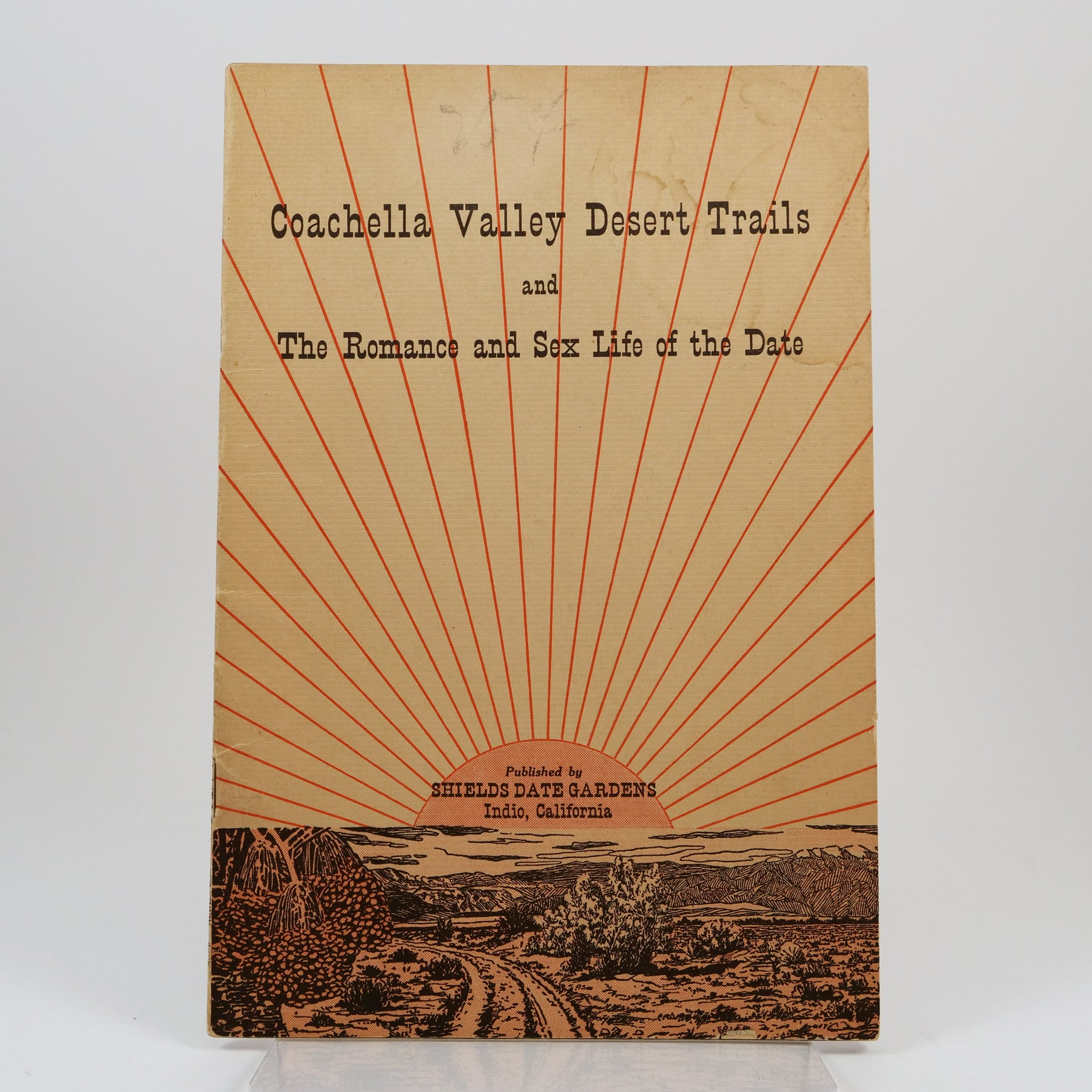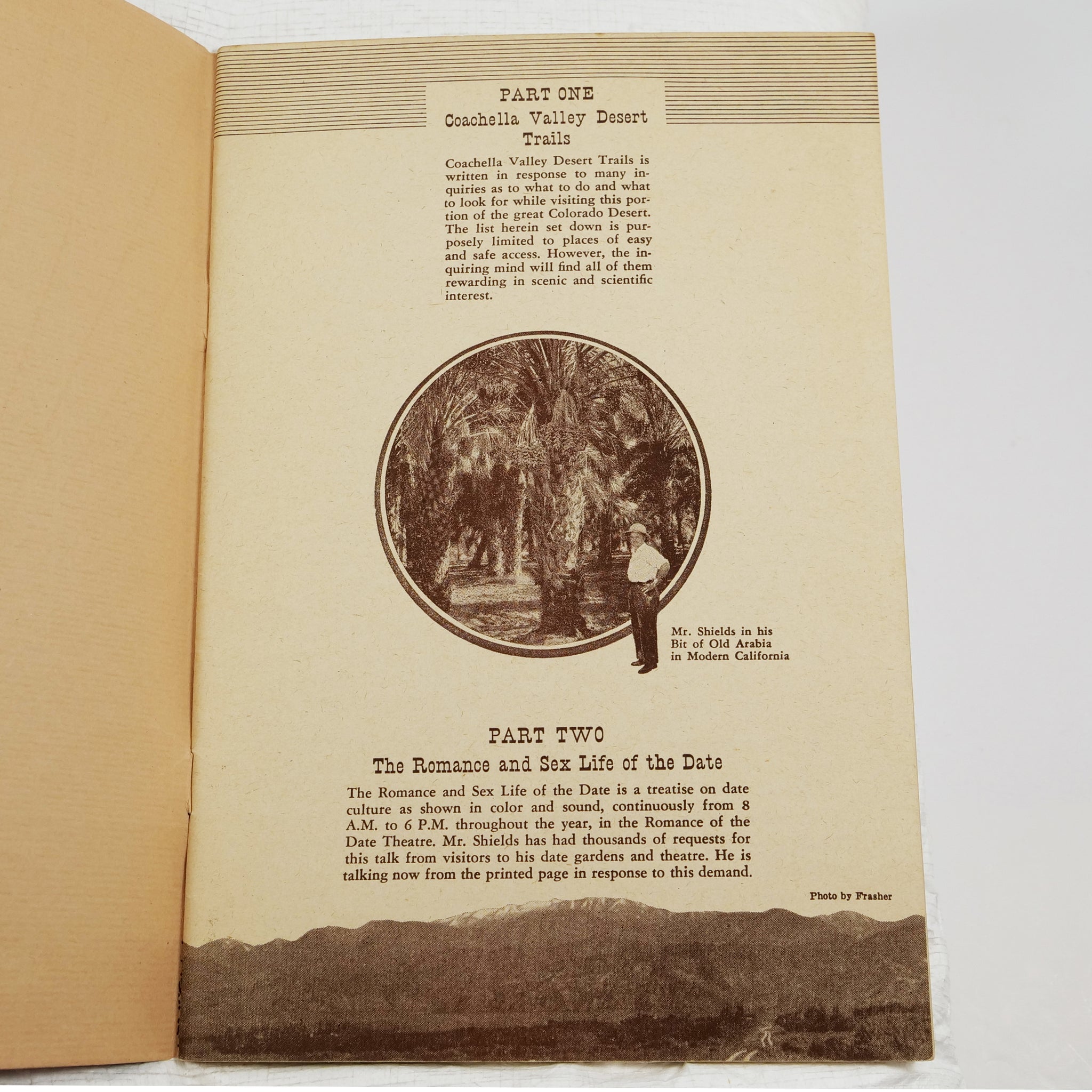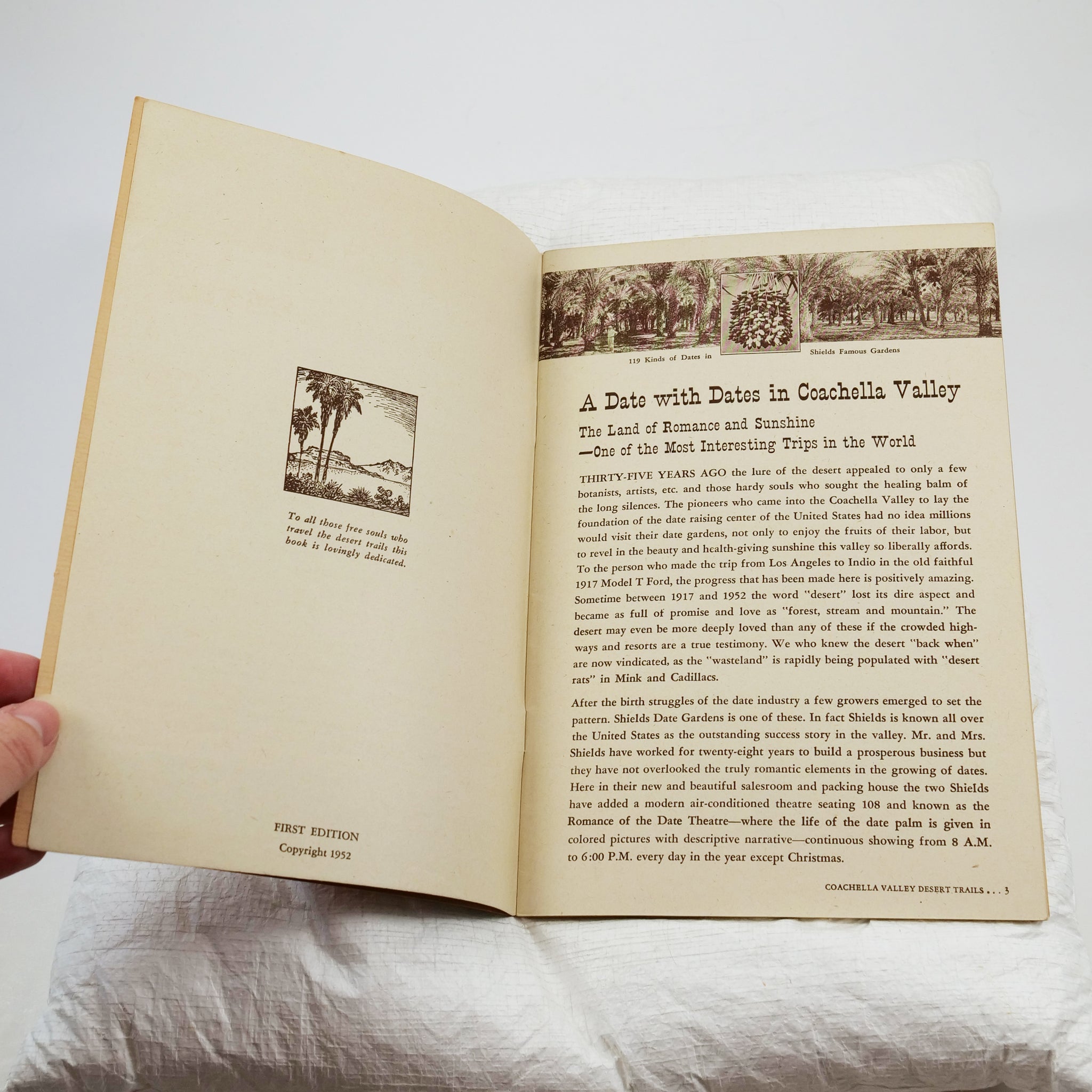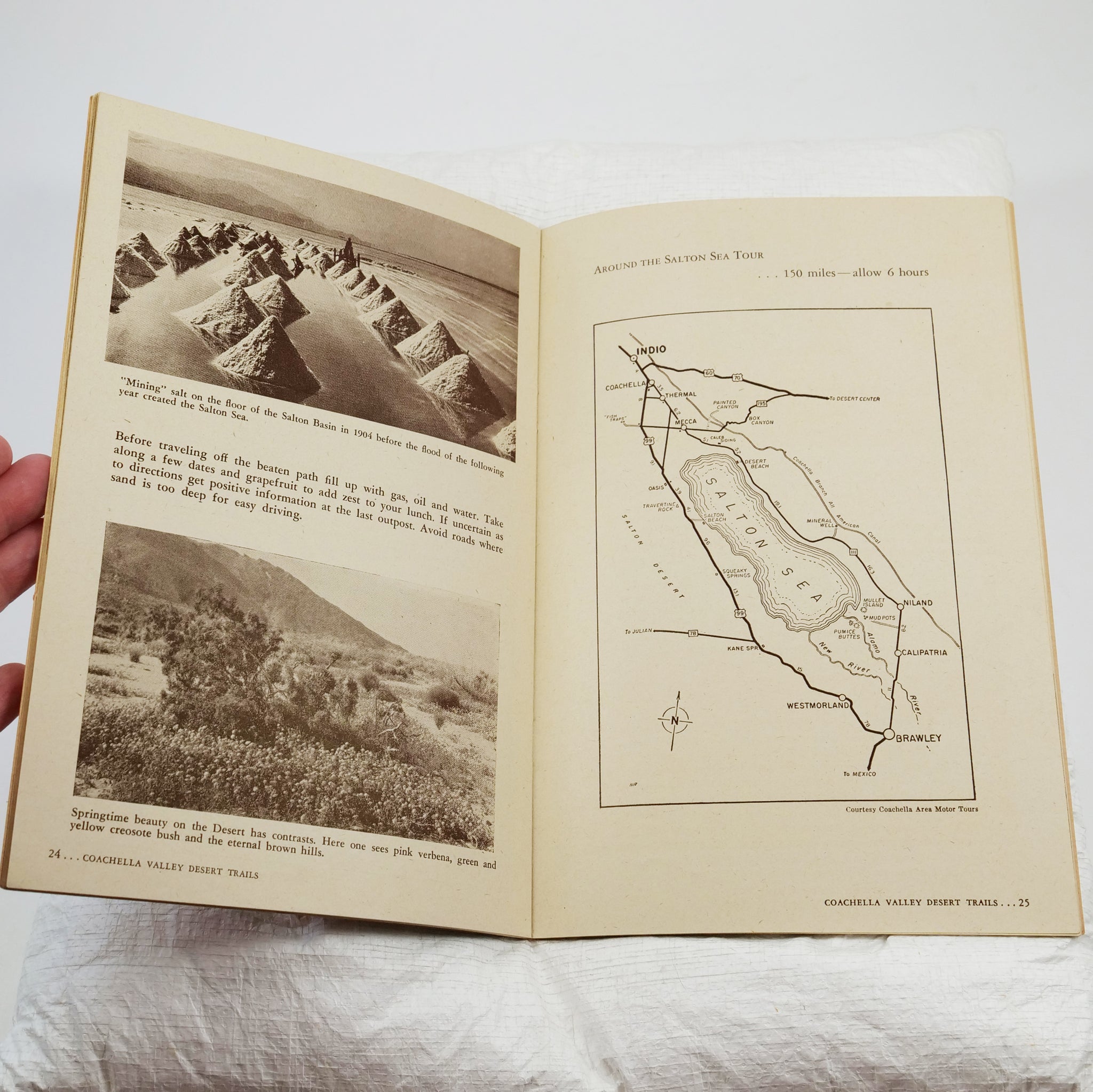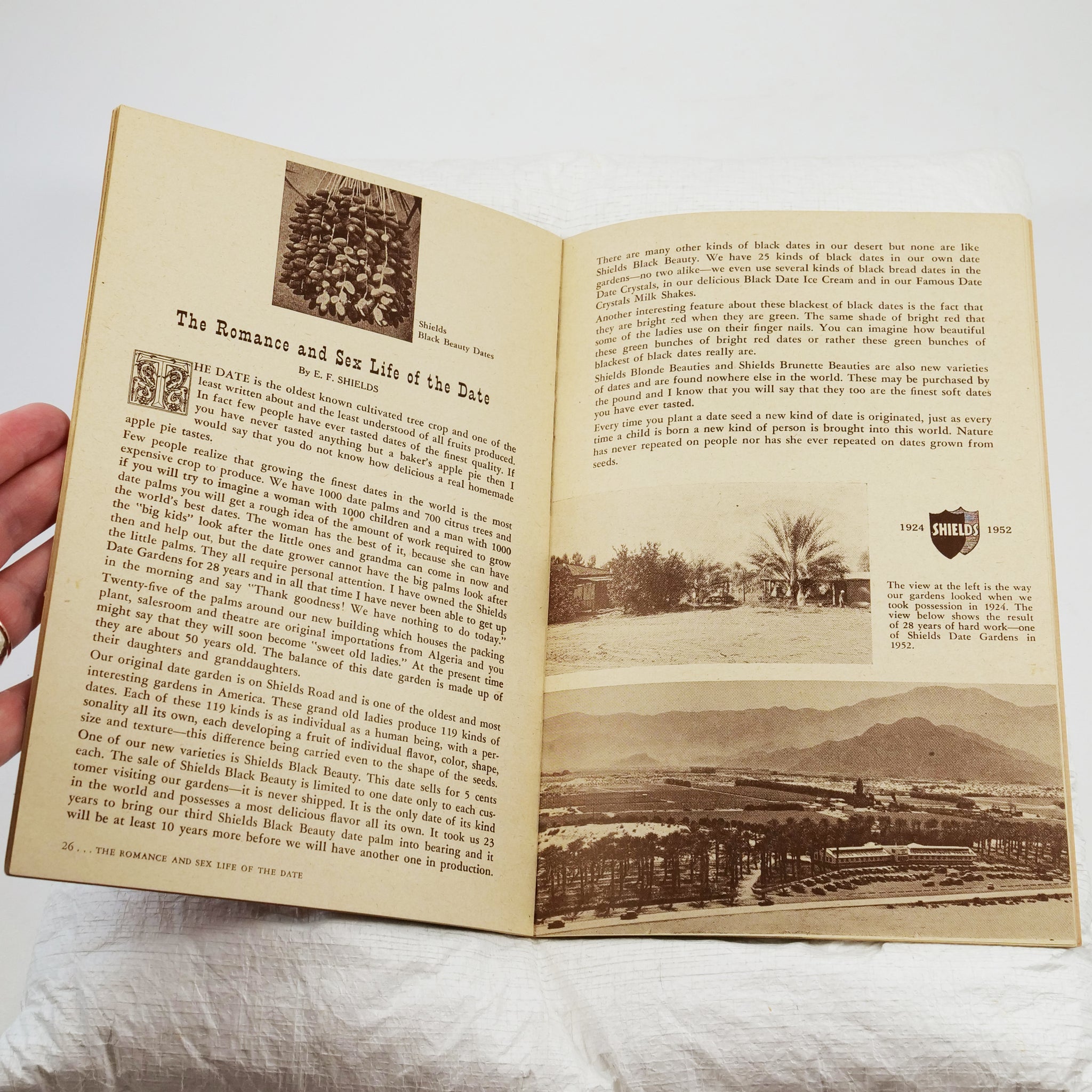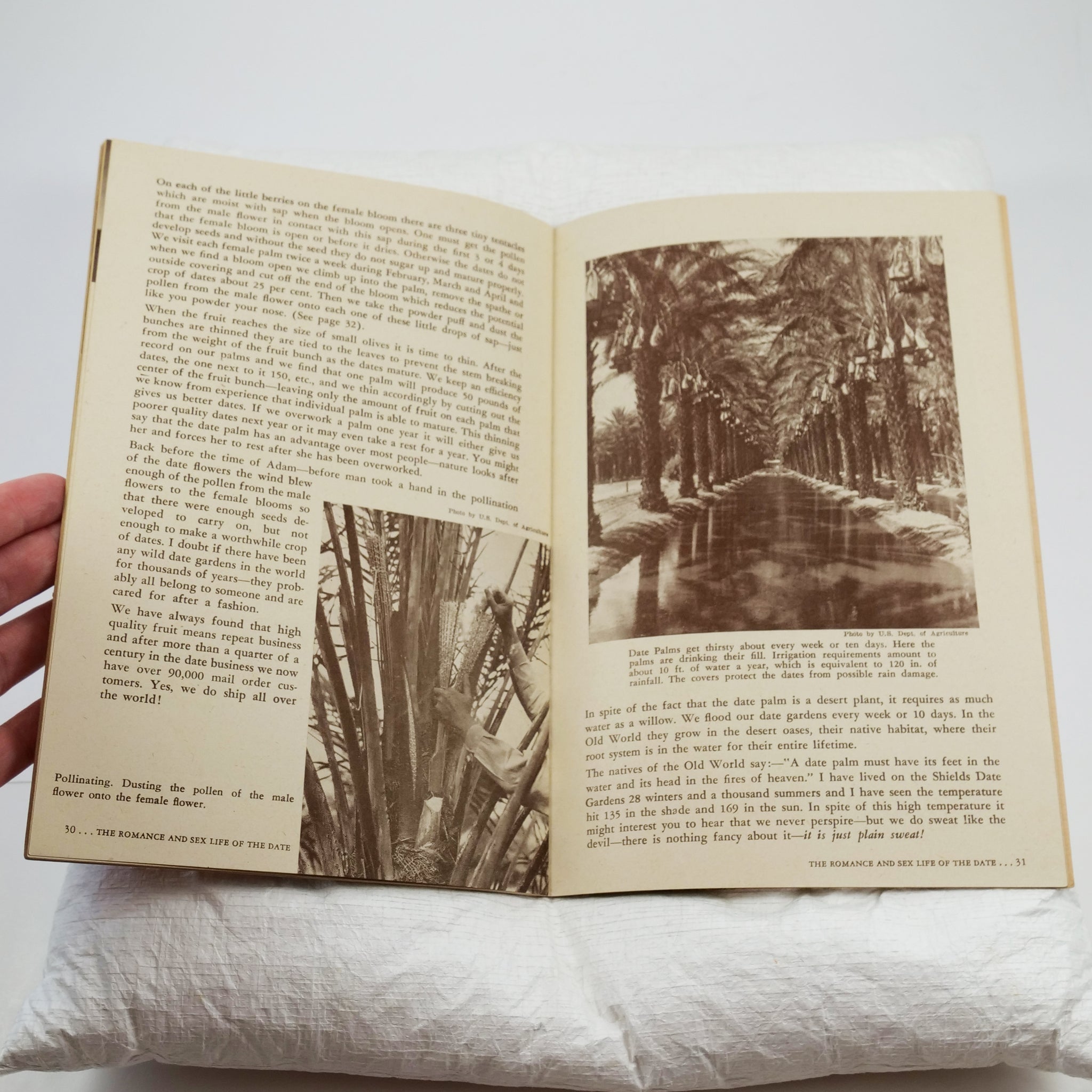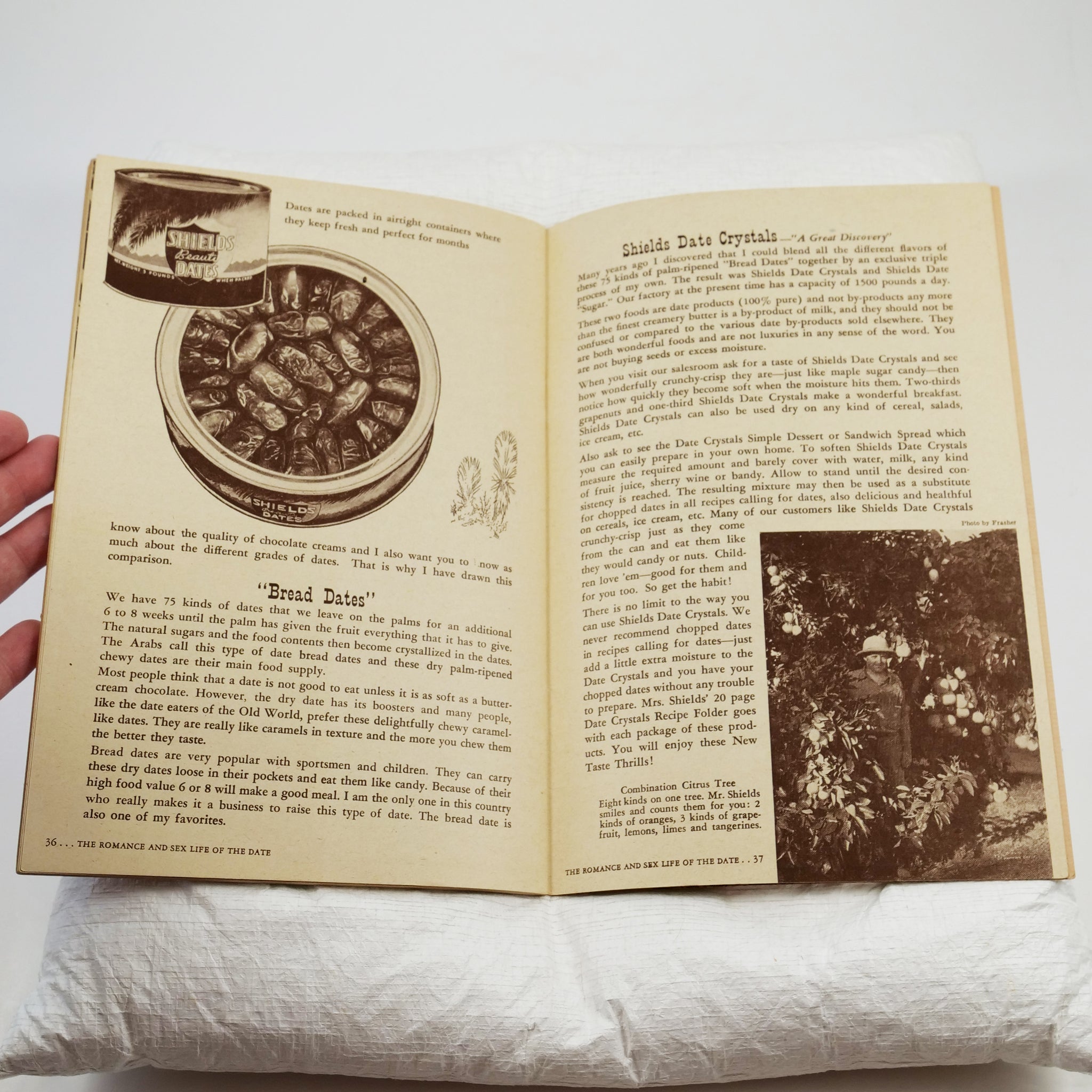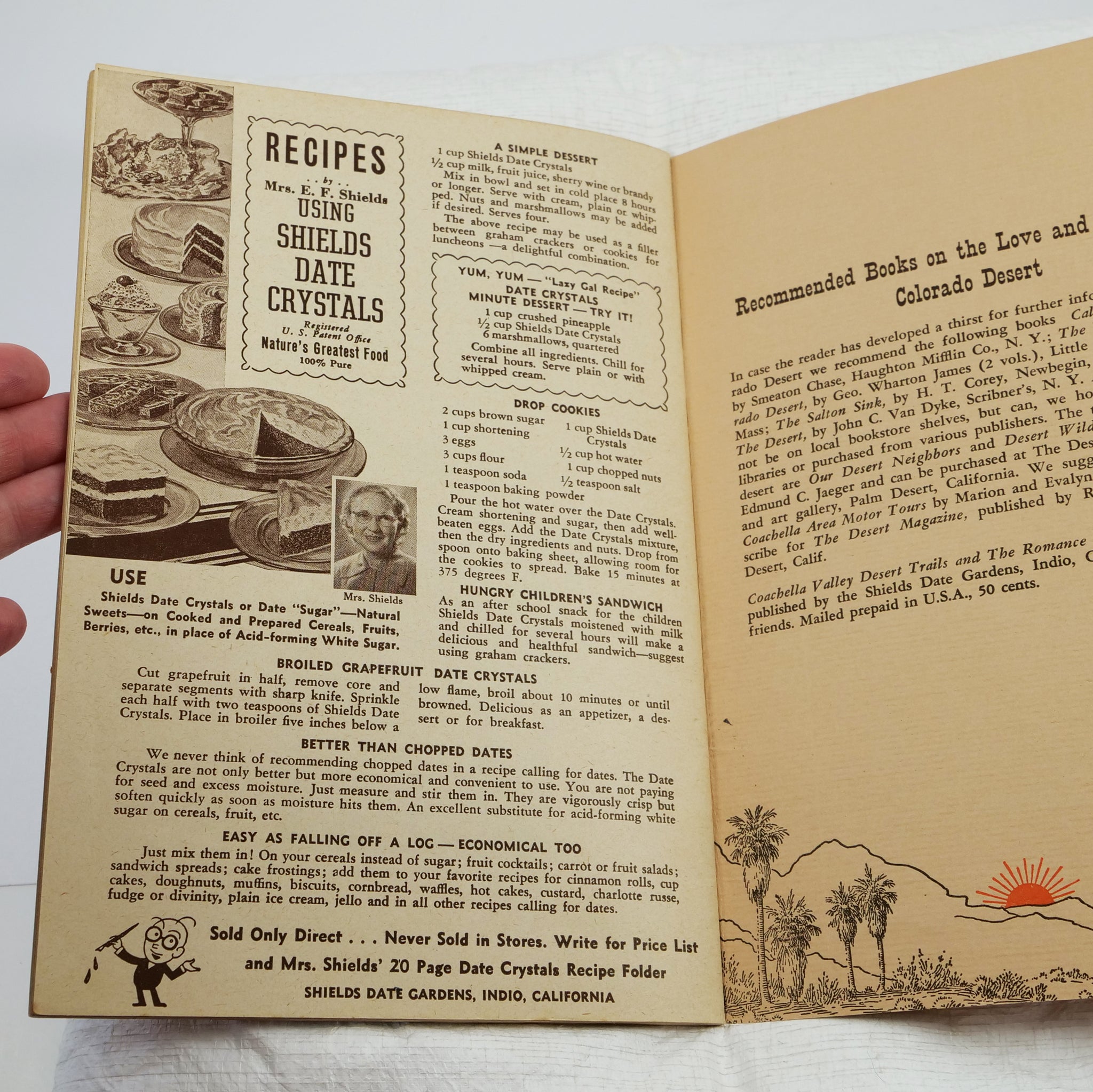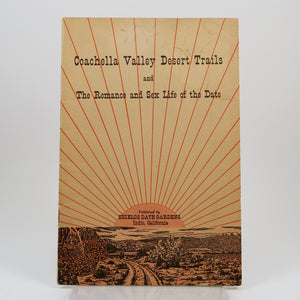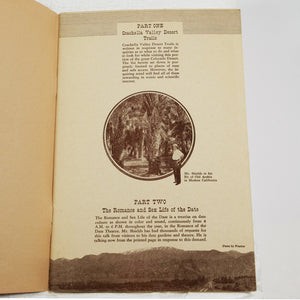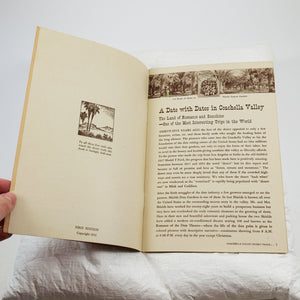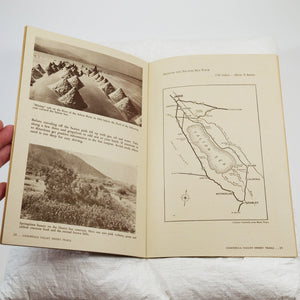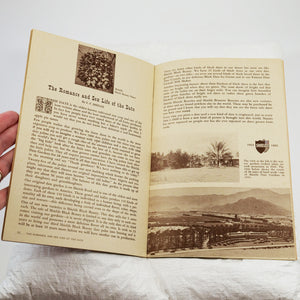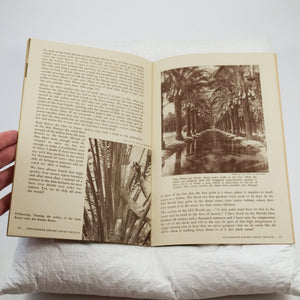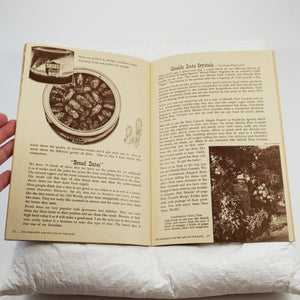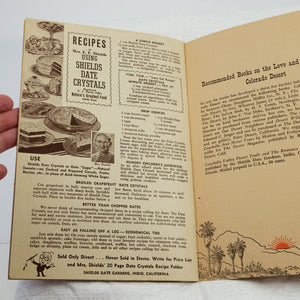Popular Science

Shields, E. Floyd | Coachella Valley Desert Trails and The Romance and Sex Life of the Date
Sold Out
-
First edition of this charming tourist booklet promoting the Coachella Valley and Shields Date Gardens, the famous “home of the date shake” on Highway 111 in Indio, California.
Date agriculture was introduced to the Coachella Valley when the US Department of Agriculture set up an experimental station in the region in 1904. “In the following decades, crop production grew exponentially, from approximately 100,000 pounds in 1919 to 1 million pounds in 1926, and then by 1955 to 48 million pounds of dates” (Conrad, “From Experiment to Celebrated Product, Dates Find a Home in Coachella Valley”, The Desert Sun.) Today the valley is home to the majority of US date farms.
The Shields Date Gardens were founded by E. Floyd and Bess Shields in 1924. Floyd was a pioneering agriculturist who developed several of his own date varieties and invented products like date sugar and date crystals for use in cooking, including in the date milkshakes sold at the gardens. He was an indefatigable marketer, directing tourists to the farm shop with a giant knight in armour, the “guardian of quality”, and offering lectures on date cultivation to the public. “The lectures proved to be a popular draw, leading Shields to incorporate a slide show and recorded soundtrack into a multimedia production. The 15-minute presentation, ‘The Romance and Sex Life of the Date,’ modified only slightly over the years, is still shown today in a small theater” (Sellers, “A Date in the Desert, California Bountiful, the California Farm Bureau, March/April 2009).
This guidebook directs tourists to local sites in “the land of romance and sunshine”, including 29 Palms and Joshua Tree (created as a National Park only fifteen years previously), the Salton Sea, Palm Springs, Painted Canyon, the All American Canal, and the annual “Arabian Nights” pageant. The second half is based on ‘The Romance and Sex Life of the Date’. Well-illustrated from photographs taken on the Shields’ farm, it focuses on the difficulty of propagating, caring for, and hand-pollinating the palms, and educates consumers on the economics of date agriculture, suggesting the prices they should expect to pay for high-quality fruit.
Also advertised in the booklet are Shields’ unique products, including date sugar, butter, and crystals, with suggestions and recipes for their use. “Two-thirds grapenuts and one third Shields Date Crystals make a wonderful breakfast. Shields Date Crystals can also be used dry on any kind of cereal, salads, ice cream, etc... As an after school snack for the children Shields Date Crystals will make a delicious and healthful sandwich — suggest using graham crackers.” -
Indio, CA: Shields Date Gardens, 1952.
40-page, wire-stitched pamphlet. Original buff wrappers printed in brown and orange with an image of the rising sun over a desert landscape to the upper wrapper and a cartoon of a knight pointing to the Shields farm on the lower wrapper. Illustrated throughout with photographs and maps. Partially erased price and a little light dampstain to the cover. Occasional tiny spots to contents, which are faintly toned. A clean and fresh copy in excellent condition.

